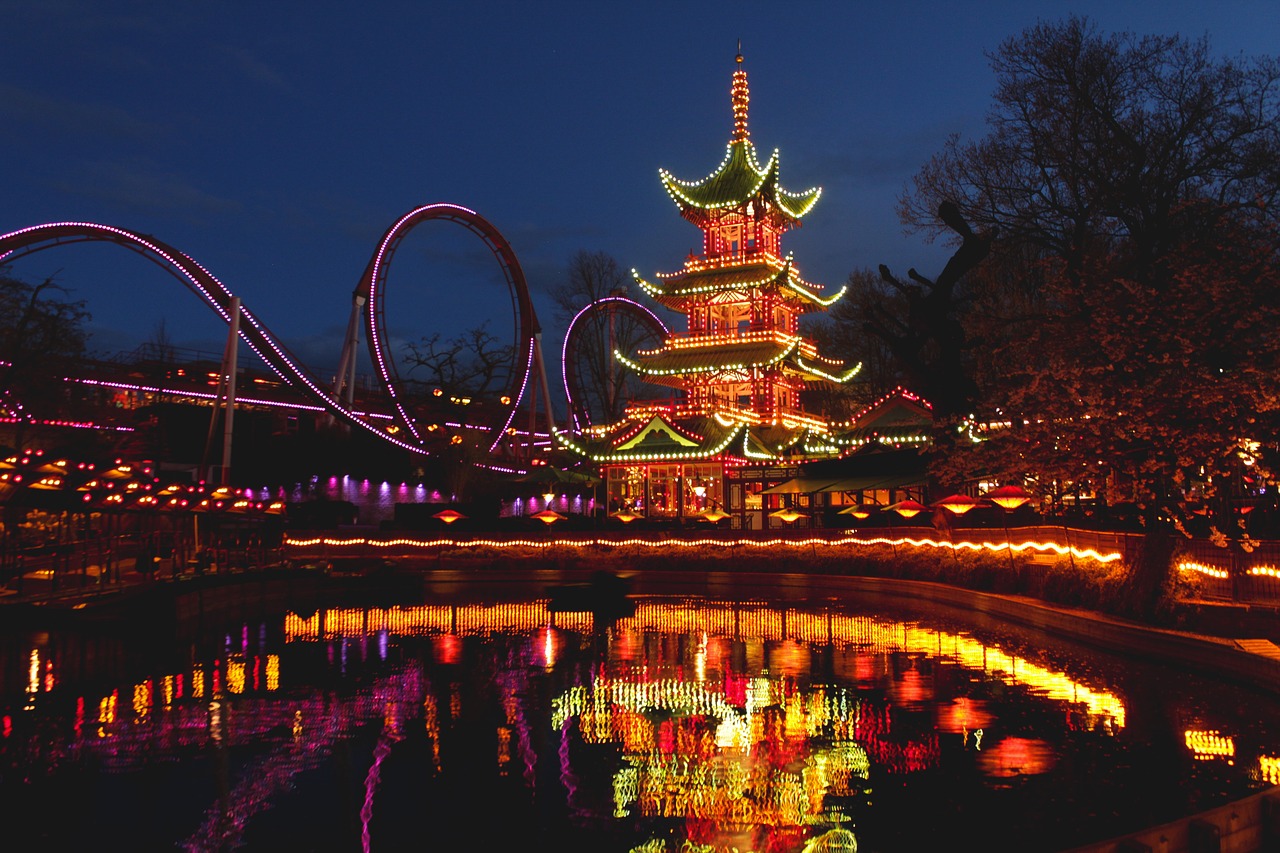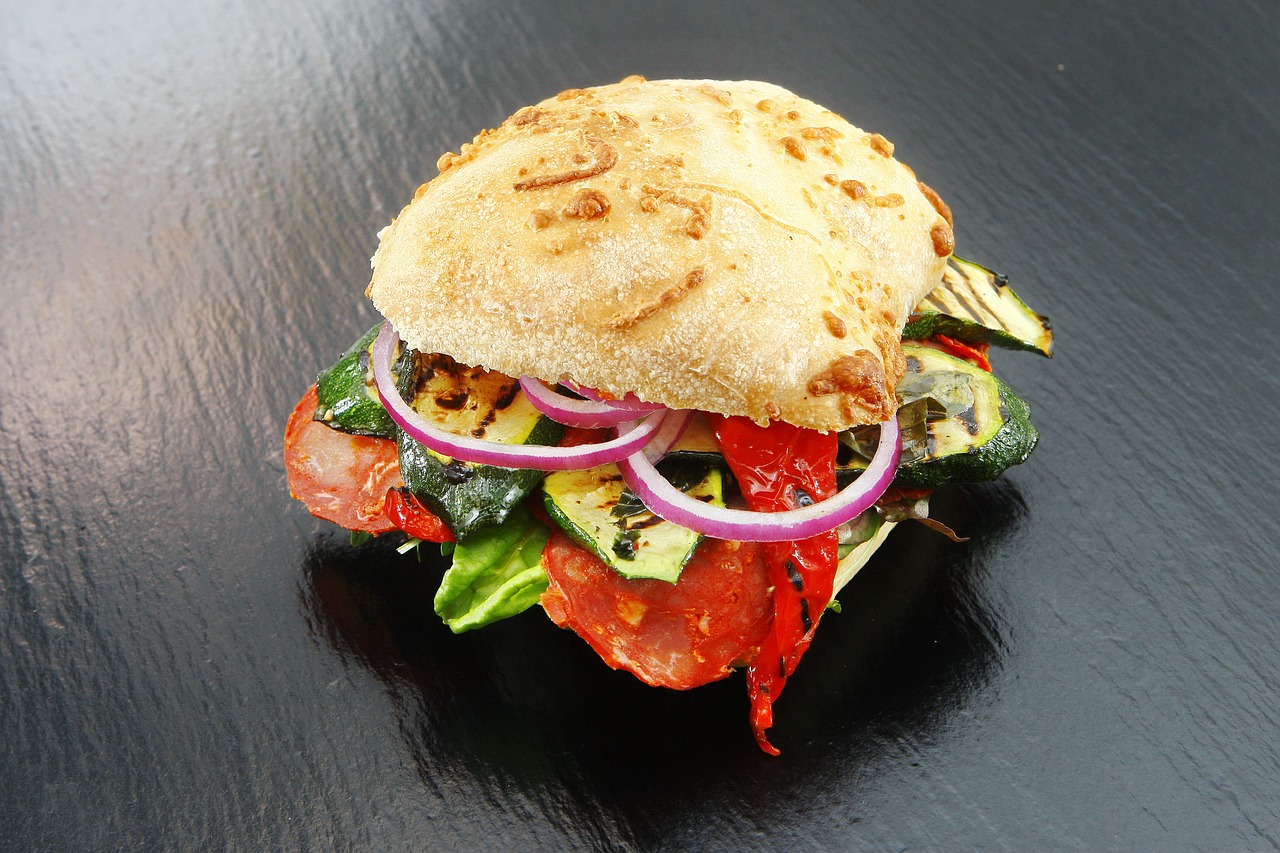
Frederiksberg have
Frederiksberg Have is one of the most romantic parks in Copenhagen. It surrounds the Frederiksberg Palace and was originally a baroque garden that was re-laid out as a romantic park in the end of the 18th century. The whole garden is an adventure to discover.
Here you'll find a fantastic Chinese summer house, a temple and a spring cave. The Chinese summer house was completed in 1803 as a replacement for a pavilion which had stood at the centre of the baroque garden but was pulled down in 1799. It was sited on a small artificial island accessible by across a bridge which was built to a matching Chinese design.
Another garden feature typical of the romantic garden is an artificial waterfall. The waterfall is 7 meters high and partly created out of marble blocks from the building site of the Marble Church. The waterfall was left as a ruin for many years but was reconstructed in 2004.
We suggest that you rent a row boat and take your loved ones on a trip around the lake and channels of the park. There are plenty of cultural events at Frederiksberg for the whole family all year around.
Fælledparken
Fælledparken, one of the biggest parks in Copenhagen, was laid out between 1906-1914. The park is loved by the Copenhageners who use it for outdoor activities.
Here you'll see people playing ball, skateboarding or sunbathing. If visiting Copenhagen with your kids, they'll love Fælledparken's playgrounds. Concerts and meetings are also held in Fælledparken. A place good as any to meet with the locals.
Amaliehave
In absolutely perfect surroundings between the royal residence, Amalienborg, and the waterfront, you'll find Amaliehave (The Amalie Garden), laid out as late as 1983, thanks to a donation from the the Maersk Foundation.
Amaliehave is not a park in the real sense of the word. It's more like a magnificent waterfront walk with greenery, flowers, a big fountain and marble sculptures.
It was designed by the Belgian artist Jean Delogne and the fountain was created by Arnaldo Pomodoro from Italy. In popular speech it's called the Marble Garden
Ørstedsparken
Ørstedsparken is one in a series of parks which were laid out on the grounds of the old fortification ring after it was decommissioned in the 1870s.
When Copenhagen's old fortification ring was decommissioned in 1868 and its grounds were relinquished to the City, it was decided that a significant part of it should be reserved for parkland for the city's rapidly growing population. The City Council adopted a plan for the redevelopment of the area in 1872 which resulted in three new parks - Ørstedsparken, the no longer existing Aborreparken and Østre Anlæg - as well as the relocation of The University of Copenhagen's Botanical Garden a few years later.
Ørstedsparken includes the area from Ahlefeldt's Bastion til Bastion to Helmer's Bastion of the old Western Rampart. Gardener and landscape architect Henrik August Flindt was charged with the design and construction began in 1876. The new park was inaugurated on 27 October 1879. It was a promenade park and also included Copenhagen's first public playground.The grounds were listed in 1963.
Ørstedsparken covers 6,5 acres and is bounded by Nørre Voldgade, Nørre Farimagsgade, H. C. Andersens Boulevard and Frederiksborg Gade, with seven entrances distributed on all sides. It retains much of its original character.
The old fortifications have partly been preserved in the landscaping of the park. A section of the old moat now forms an elongated lake which runs along the length of the park. It has an area of 1,8 acres and a depth of about 4 meters. In 1994, an underground connection to Peblinge Sø was created to improve the water quality. The water circulates between the two lakes, especially during the winter. The wrought iron bridge which today crosses the lake, originally spanned the gap created with the demolition of the Northern City Gate in 1857. In 1873, the bridge was dismantled and re-built at its current location.
Valby park
Valby Park is the largest park in Copenhagen. It has 17 themed gardens, a big natural ground and a jogger's track all the way up to the Kalvebod beach. It is well known for hosting many concerts and major events.
It is especially popular among the joggers and the families spending summers outdoor. During summer, you could spot many families enjoying barbecues in the Park. It is easily accessible from Central Station. There is a bus stop right at its doorstep. Plan to spend at least half a day to have a relaxing time.
The Rose Garden
The Rose Garden is situated on the edge of Valby park. It is a public area containing a huge and dazzling array of roses in all their forms.
The circular flowerbeds contain trees, hybrids and wild roses. Their is a children's playground here, making it an ideal place for families to visit. There are good parking facilities. It is a popular spot for dog-walking. In Valby Park there is also a cafe for those who have not brought their own refreshments. The garden hosts an annual rose show in August.
Other themes
There is also a Dahlia Garden, full of different colored dahlias, H.C. Andersen's Oriental Garden, a kitchen garden and a herb garden.
KONGENS HAVE
Once a monastery garden, then a Baroque garden, Kongens Have (The King's Garden) is today also a place for many open air concerts or carnivals.
Kongens Have is the oldest and most visited park in central Copenhagen, Denmark. Established in the early 17th century as the private gardens of King Christian IV's Rosenborg Castle, the oark also contains several other historical buildings, including Rosenborg Barracks, home to the Royal Guards, as well as a high number of statues and monuments. The park also plays host to temporary art exhibitions and other events such as concerts throughout the summer.
The Renaissance gardens
The park traces its history back to 1606 when King Christian IV acquired land outside Copenhagen's East Rampart and established a pleasure garden in renaissance style which also delivered fruit, vegetables and flowers for the royal household at Copenhagen Castle. The garden had a relatively small pavilion which was later expanded into present day Rosenborg Castle, which was completed in 1624.
In 1634, Charles Ogier, secretary to the French ambassador to Denmark, compared the gardens to the Tuileries Garden in Paris. A drawing by Otto Heider from 1649, the oldest dated garden plan from Denmark, provides knowledge about the layout of the original garden. The garden contained a pavilion, statues, a fountain and various other features. Its plants included mulberries, vine, apples, pears and lavender.
The Baroque gardens
Later in the century, as fashions changed, the garden was redesigned. A garden plan from 1669 show a garden maze, a typical feature of the Baroque garden. It had an intricate system of paths which led to a central space with an octagonal summerhouse in its centre. From about 1710, after Frederiksberg Palace had been built, Rosenborg Castle, as well as its gardens, was largely abandoned by the royal family and the gardens were instead opened to the public.
Johan Cornelius Krieger was appointed gardener of the Orangery in 1711 and after becoming head gardener in 1721 he redesigned the garden in the Baroque style.
THE BOTANICAL GARDEN
The Botanical Garden covers an area of 10 hectares and is particularly noted for its extensive complex of historical glasshouses dating from 1874.
Copenhagen Botanical Garden, is a botanical garden located in the centre of Copenhagen, Denmark. It covers an area of 10 acres and is particularly noted for its extensive complex of historical glasshouses dating from 1874. The garden is part of the Natural History Museum of Denmark, which is itself part of the University of Copenhagen Faculty of Science. It serves both research, educational and recreational purposes.
The botanical garden was first established in 1600 but it was moved twice before it was ultimately given its current location in 1870. It was probably founded to secure a collection of Danish medicinal plants after the reformation had seen many convents and their gardens abandoned or demolished
Copenhagen Botanical Garden is an informal garden with free admission. There are conservatories, a museum and herbarium, a library, a shop with plants, seeds and a small selection of garden equipment as well as an eating place.
LANDBOHØJSKOLENS HAVE
Landbohøjskolens Have (Royal Danish Veterinarian and Agricultural School's garden) was built according to the contemporary tones in a romantic style with many elements of landscape gardens.
It was founded in 1858 at the same time as the Royal Danish Veterinarian and Agricultural School was built. Today the area is called Frederiksberg Campus and is a part of the University of Copenhagen.
They started from bare grounds far from Copenhagen and designed a garden which today is a big attraction for employees and students at the faculty as well as garden interested visitors from near and far. Today there are several gardens in the area and the gardens and all the green areas around the buildings at Frederiksberg Campus are named collectively The University Gardens.
Landbohøjskolens Have was built according to the contemporary tones in a romantic style with many elements of landscape gardens. The garden contains many of the garden- and parkrooms that belongs the style: a pond, a brook, a rockery, a rose garden, a forest, groves and open areas, blanket grassbeds and flower beds, etc. Today the central part of the garden is called The Romantic Garden.
BIBLOTEKSHAVEN
Bibliotekshaven is the garden of the Royal Danish Library on Slotsholmen. It lies peaceful in a perfect co-existence with the surrounding architecture.
Bibliotekshaven is located on top of the former site of Christian IVs old Naval Harbour. The harbour was flanked by an arsenal - now housing the Tøjhus Museum - and a supply depot, both completed in 1694, and was connected to the main harbour by a narrow canal. Later the Navy was moved to Holmens Kanal and the old harbour was filled in 1867.
The garden was designed in 1920 by landscape gardener Jens Peder Andersen and Christiansborg's architect Thorvald Jørgensen. As a reminder of its maritime past, a small pond has been retained in the middle of the gardens and an old mooring ring, the type used by ships in the 17th and 18th centuries, has been built into the masonry at the end of the gardens.
Bibliotekshaven has a shallow pool at its center. In the middle of it stands an eight meter high copper sculpture which spouts out cascades of water on the hour, designed by sculptor Mogens Møller.
The wide variety of flowers in the gardens change with the seasons. Visitors can enjoy the view from rows of benches in the shade of the trees or from others out in the sun along the wall between the gardens and the yard to the Danish National Archives. Column plinths from the old Christiansborg serve as epergnes in the four grassy corner pieces and the principal axis through the gardens creates a link between the yard to the Danish National Archives and the main entrance to the Royal Library.













